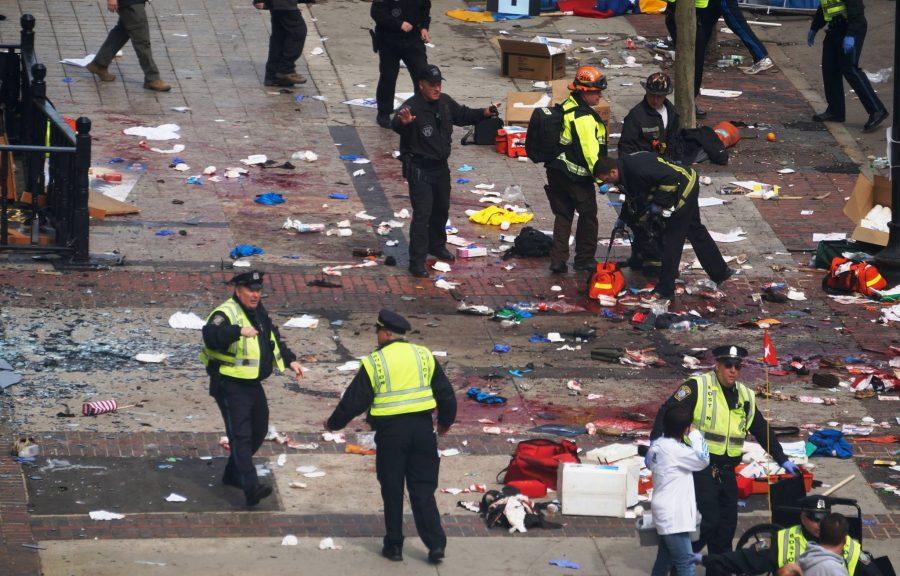Bombing in Chelsea Reignites Fear, Leads to Understanding
Homecoming Issue
October 21, 2016
Just days after American citizens mourned the anniversary of 9/11, residents of Seaside Park, N.J. experienced an act of terror of their own. Along the annual Marine Corps Charity 5k route, a pipe bomb-style device detonated, but fortunately did not result in any reported damage. Later that evening on Manhattan’s West 23rd Street, another explosion occurred, this time leading to 31 injuries and a widespread remembrance of pain that hit home for the already scarred masses. Police investigators recovered additional bombs that failed to detonate elsewhere, including one enclosed in a suitcase on West 27th Street, just blocks away from the second explosion.
Louisa Spinner ’18, having familial ties to the city, shared similar sentiments to those stunned by the attacks: “My immediate reaction to the bombing was a mix between shock and disgust. As my knowledge about the bombing grew, so did my concern, as the incident was just one block away from my aunt’s apartment in NYC. The fact that it was so close to where my aunt resides made me realize the severity of these situations as well as the consequences of these inhumane acts and the ensuing tragedy that all of the innocent people and their families face.”
Authorities apprehended their primary suspect Ahmad Khan Rahami, whose fingerprints matched those found on the unexploded bomb in Manhattan. Rahami, wounded by police during an altercation involving firearms, was charged hours later with nine counts stemming from the attacks.
Since then, his story has been sensationalised by several established publishing agencies, who attribute his gradual recruitment into violent jihad to his dissatisfaction with the travails of a first-generation immigrant; unable to climb the socioeconomic ladder, Rahami struggled to transcend the confines of his traditions in order to embrace America and its culture.
In order to construct the most authentic, unbiased description of Rahami and his background, it was necessary for media outlets to examine his history thoroughly. Upper school history and TOK teacher Javier Ergueta offered additional insight to the accuracy of his portrayal: “The accounts I read in the New York Times and the (UK) Guardian were fragmentary, but did attempt to present him in a way that allowed him some human depth, which is what most other news sources seek to deny.” In an attempt to humanize Rahami, the articles written by these sources provided background on his humble beginnings and descent to extremism that ultimately enriched the public’s perceptions about his character.
Providing an all-encompassing view of Rahami facilitates the acceptance of all peoples and cultures while also minimizing ignorance and violence that targets those belonging to a minority. Ergueta continued: “I was not surprised [by the bombings]. Unfortunately, it is all too understandable how a not-very sophisticated Muslim today might come to the conclusion that the United States is making war on all Islam. The more we give in to our fears, further de-humanize Muslims, intervene militarily in the Middle East, and disrespect their religion, the more troubles of this sort we can expect.” The key to obtaining success, therefore, is to maintain objectivity and treat all humans with dignity.
However, impartialness to people of all religious and cultural backgrounds requires the absence of bias, whose presence remains prevalent since being fueled by the 9/11 attacks. The hurt stemming from these haunting attacks manifests itself into fear, which remains a part of those old enough to fully experience or understand the trauma. As a result, the recent events ignited that same fear within hearts of Americans as they were reminded of the devastation caused fifteen years before.
Ergueta stated, “9/11 spooked the American people. About a generation after we had stopped being afraid for our lives because of the now-defunct Cold War, suddenly we were successfully attacked in the middle of our greatest city. Ever since, fear has never subsided far below the surface of our consciousness, where it has been very successfully exploited by power-hungry politicians.” By linking this attack to past acts of terror, the public’s opinions regarding this incident are thus shaped to reflect a former perspective, which is not always rooted in the truth.































